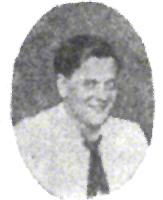- Ralph Chaplin
Infobox Person
name = Ralph Hosea Chaplin

image_size = 150px
caption =
birth_date = 1887
birth_place =
death_date = 1961
death_place =
occupation = laboractivist
spouse =
parents =
children =Ralph Hosea Chaplin (1887—1961) became a labor
activist , when at the age of seven, he saw a worker shot dead during thePullman strike inChicago, Illinois . He had moved with his family from Ames County, Kansas to Chicago in 1893. During a time inMexico he was influenced by hearing of the execution squads established byPorfirio Diaz , and became a supporter ofEmiliano Zapata . On his return, he began work in various union positions, most of which were very poorly paid. Some of Chaplin's early artwork was done for the International Socialist Review and other Charles H. Kerr publications.For two years Chaplin worked in the strike committee with Mother Jones for the bloodyKanawha County, West Virginia strike ofcoal miners in 1912-13. These influences led him to write a number of labor oriented poems, one of which became the words for the oft-sung union anthem, "Solidarity Forever ".Chaplin then became active in the
Industrial Workers of the World (the I.W.W., or "Wobblies") and became editor of its eastern U.S. publication "Solidarity". In 1917 Chaplin and some 100 other Wobblies were rounded up, convicted, and jailed under theEspionage Act for conspiring to hinder the draft and encouragedesertion . He served four years of a 20-year sentence for this.Although he continued to work for labor rights after his release from prison, Chaplin was very disillusioned by the aftermath of the Russian RevolutionHowever, he was also not pleased by the course of
New Deal liberalism. Chaplin maintained his involvement with the I.W.W., serving in Chicago as editor of its newspaper, the Industrial Worker, from 1932 to 1936. He became active in the cause of preventing Communist infiltration in American unions.Eventually Chaplin settled in Tacoma,
Washington , where he edited the local labor publication. From 1949 until his death he was curator of manuscripts for the Washington State Historical Society.He is credited with designing the now widely used anarcho-syndicalist image, the black cat. As its stance suggests, the cat is meant to suggest wildcat strikes and radical unionism.References
*Ralph Chaplin, "Wobbly: The Rough-and-Tumble Story of an American Radical" (The University of Chicago Press, 1948).
*Ralph Chaplin, "Confessions of a Radical," two-part article in "Empire Magazine" of the "Denver Post", Feb. 17, 1957, pp. 12-13, and Feb. 24, 1957, pp. 10-11.
*Ralph Chaplin, "Why I Wrote Solidarity Forever," "American West", vol. 5, no. 1 (January 1968), 18-27, 73.External links
*
* [http://www.washingtonhistory.org/wshs/research/finding_aids.htm] provides finding aid to article subject from the Special Collections, Washington State Historical Society (WSHS)
Wikimedia Foundation. 2010.
